
The heart, a tireless marvel of biological engineering, beats approximately 100,000 times a day, diligently sustaining life. Its extraordinary resilience, however, is not without limits. For decades, cardiologists have witnessed firsthand the profound impact of daily dietary choices on cardiovascular well-being, often finding patients, despite their best efforts in other areas like exercise and stress management, still grappling with serious heart conditions. The common thread? The very foods we put on our plates.
Many of the most detrimental items in the modern American diet are deceptively marketed. They masquerade as “heart smart,” “plant-based,” or “low-fat,” leading consumers astray with buzzwords that obscure ingredients known to fuel inflammation, destabilize blood sugar, and quietly, yet consistently, damage our arteries over time. It’s a pattern that board-certified interventional cardiologist Dr. Sanjay Bhojraj observed after two decades treating heart disease, clogged arteries, and metabolic dysfunction, prompting him to dedicate his efforts to prevention from the outside in.
Inspired by these critical insights, we embark on a journey to uncover the foods cardiologists themselves wouldn’t touch, not out of extremism, but from a deep understanding of their long-term effects on the human heart. This in-depth look provides evidence-based reasons for avoiding these items and, crucially, offers practical, delicious alternatives to help you make informed choices, fostering a healthier heart and a more vibrant life. Let’s explore these dietary pitfalls and discover how small, consistent swaps can lead to significant cardiovascular benefits.

1. **Sugary Breakfast Cereals**These seemingly innocuous boxes, often adorned with smiling cartoon mascots and even carrying misleading health claims, are, in the stark reality revealed by cardiologists, little more than desserts in disguise. Dr. Bhojraj emphatically states, “You might as well eat a glazed donut for breakfast!” The illusion of a quick, wholesome start to the day crumbles under scrutiny, as these cereals deliver a substantial sugar spike that does far more than just induce mid-morning grogginess.
The rapid influx of sugar triggers an intense surge in insulin, forcing the body’s metabolism into overdrive. Over extended periods, this relentless metabolic stress begins to wear down the vascular system. Cardiologists like Dr. Bhojraj have witnessed patients developing a spectrum of issues, including insulin resistance, chronic fatigue, and significant cardiovascular complications—all unequivocally linked back to this common morning ritual.
Beyond the immediate sugar rush, many seemingly wholesome options like store-bought granola are often “ultra-processed and full of hidden sugars,” as Dr. Bhojraj points out. They bear little resemblance to the truly nutritious whole foods they pretend to be, often packed with additives that undermine their perceived health benefits. This makes it challenging for consumers to discern genuine nutritional value from clever marketing.
The critical takeaway is that a breakfast laden with refined sugars sets a detrimental tone for the entire day, promoting inflammation and creating a cycle of blood sugar instability that is deeply damaging to heart health. It primes the body for fat storage and increases the long-term risk of type 2 diabetes and cardiovascular disease. Shifting away from these sugar bombs is a foundational step towards protecting your heart.
Instead of falling prey to these sugary traps, cardiologists highly recommend embracing simple, whole-food alternatives. Steel-cut oats, for instance, combined with nutrient-rich berries and a sprinkle of cinnamon, offer real fiber, a wealth of antioxidants, and provide stable, sustained energy. This choice helps regulate blood sugar, supports a healthy metabolism, and gives your heart the wholesome fuel it deserves, making it a far superior start to any day.
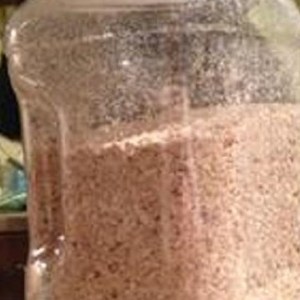
Healthy Cereal Jar
Ingredients
Equipment
Method
- Measure out all dry ingredients: rolled oats, vanilla whey protein powder, oat bran, wheat germ, dried fruit, chia seeds, flax seeds, ground cinnamon, and salt.
- Combine the measured rolled oats, oat bran, wheat germ, vanilla whey protein powder, chia seeds, flax seeds, ground cinnamon, and salt in a very large mixing bowl.
- Using a large whisk or spoon, thoroughly mix all the dry ingredients until evenly distributed.
- Add the dried fruit to the bowl with the mixed dry ingredients.
- Continue mixing until the dried fruit is well incorporated throughout the cereal blend, ensuring no ingredient is clumped.
- Transfer the prepared cereal mix into airtight storage jars or containers.
- Seal the jars tightly to maintain freshness and store in a cool, dry place.
- To serve, portion the desired amount of cereal mix into a bowl.
- Add milk (dairy or plant-based) or yogurt and any desired fresh fruit toppings.
- Enjoy your healthy and convenient cereal.
Notes
Read more about: OMG, Remember These? 6 Discontinued ’90s Snacks That Defined Our Childhood and Still Give Us Serious Nostalgia!

2. **Processed Deli Meats**Processed deli meats, a convenient staple for many, particularly in sandwiches, conceal a significant dark side that cardiologists unequivocally warn against. Products such as bacon, hot dogs, salami, ham, and pastrami are not only loaded with saturated fat but also contain alarming amounts of sodium and chemical preservatives, specifically nitrates and nitrites. These compounds pose a multi-faceted threat to cardiovascular health.
The presence of nitrates and nitrites is particularly concerning because these substances can transform into carcinogenic compounds within the body. While this raises cancer risks, their immediate impact on the heart is equally dire. These additives are known to elevate blood pressure, placing undue strain on the entire cardiovascular system, and actively promote long-term arterial damage, setting the stage for more serious conditions.
Dr. Andrew Freeman, director of cardiovascular prevention and wellness at National Jewish Health, emphasizes the broader health implications, noting that the World Health Organization has determined eating processed meats causes cancer. Dr. Sharonne Hayes, founder of the Women’s Heart Clinic at Mayo Clinic, avoided processed meats even before becoming vegetarian due to their high calorie, saturated fat, and salt content, alongside these added nitrates.
The high sodium content in processed meats is another major contributor to heart disease. Excess sodium dramatically increases blood pressure, forcing the heart to work harder and straining the kidneys. This persistent elevation in blood pressure is a leading risk factor for heart failure, stroke, and overall arterial damage. It’s a silent assailant, working stealthily to undermine your heart’s health.
Cardiologists are clear: if your “meat” boasts an unnaturally long shelf life, your arteries are likely paying a steep price. The convenience these products offer simply does not outweigh the cumulative harm they inflict. To safeguard your heart, prioritize unprocessed protein sources. Instead, consider roasting your own turkey or chicken breast and slicing it fresh, or even better, explore plant-based proteins like lentils, chickpeas, or black beans for truly heart-healthy alternatives that nourish without the hidden dangers.

Grilled Deli Sandwiches
Ingredients
Equipment
Method
- In a large skillet, heat vegetable oil over medium-high heat. Add sliced onion, mushrooms, green pepper, and red pepper; sauté until tender and lightly caramelized, about 5-7 minutes. Remove from skillet and set aside.
- If not already cooked, prepare bacon strips until crispy; crumble and set aside.
- Spread butter or a light brushing of vegetable oil on one side of each sourdough bread slice (optional, but recommended for a golden crust).
- Assemble sandwiches: Place a slice of sourdough bread (butter-side down, if using) in the skillet over medium heat.
- Layer the bread with equal portions of honey ham, smoked turkey, and pastrami.
- Distribute the sautéed vegetables and crumbled bacon evenly over the meats.
- Top with one slice of American cheese and one slice of Swiss cheese.
- Place another slice of sourdough bread (butter-side up, if using) on top.
- Grill the sandwiches for 3-5 minutes per side, or until the bread is golden brown and the cheeses are fully melted and gooey. Press gently with a spatula to ensure even contact and melting.
- Remove from skillet, let rest for a minute, then slice in half and serve warm.
Notes
Read more about: Seriously What Happened? 12 Once-Iconic Deli Meats Families Just Don’t Slice Anymore.
3. **Sugary and “Diet” Beverages**Sugary beverages—soft drinks, sweetened teas, fruit punches, and energy drinks—represent one of the most significant sources of added sugars in the modern diet, delivering a devastating one-two punch to your cardiovascular system. These drinks cause rapid blood sugar spikes, overworking adrenal glands, and flooding the body with inflammatory compounds. This cascade of effects contributes directly to weight gain, insulin resistance, and heightened inflammation, all key drivers of heart disease risk.
Alarmingly, the “diet” or “zero-sugar” versions, often perceived as healthier alternatives, can be equally, if not more, problematic. Dr. Sanjay Bhojraj cautions that artificial sweeteners like aspartame and sucralose, while removing real sugar calories, can confuse the body’s insulin response and paradoxically increase cravings for sugar. This intricate disruption can lead to a host of health issues, including weight gain, insulin resistance, type 2 diabetes, and metabolic syndrome, ultimately escalating the risk of cardiovascular diseases.
Recent scientific findings further underscore these concerns. A 2023 study in Nature Medicine explicitly linked the artificial sweetener erythritol to an increased risk of heart attack and stroke, demonstrating its capacity to promote blood clot formation. Similarly, a 2022 review in The BMJ found a clear association between artificial sweetener consumption and a higher risk of cardiovascular disease and stroke, particularly among high consumers, with an 18 percent increased risk of stroke.
Even products like “bottled green juices,” often marketed as wellness elixirs, are frequently “fructose bombs in disguise,” as noted by cardiologists like Dr. Elizabeth Klodas. They pack concentrated sugars without the beneficial fiber of whole fruits and vegetables, leading to rapid blood sugar spikes. Flavored sparkling waters with “natural flavors” can also be deceptive, with some containing “synthetic chemicals and acids that erode gut lining,” according to Dr. Bhojraj.
To protect your heart, cardiologists strongly advocate for replacing these detrimental beverages with truly healthy choices. Water remains the gold standard, but sparkling water infused with fresh lemon or refreshing iced herbal tea provides excellent hydration without the hidden sugars or artificial additives. For those who enjoy caffeine, Dr. Freeman suggests that black coffee or tea in moderation can be quite healthful, but warns against turning it into a “calorie bomb” with added sugars, whipped cream, or artificial flavors.
Read more about: Seriously, What Happened? 10 Once-Popular Sodas Millennials Are Just Not Sipping Anymore
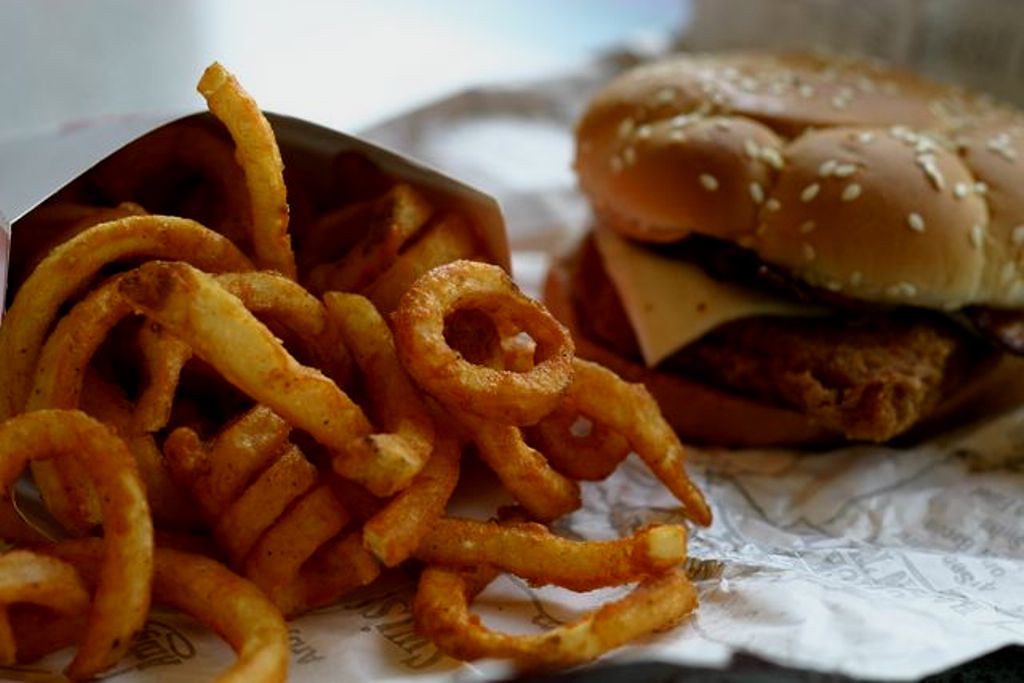
4. **Deep-Fried Fast Foods**The allure of deep-fried fast foods and carnival snacks—think French fries, corn dogs, and funnel cake—is undeniable for many, but cardiologists view them as a direct assault on arterial health. While undeniably delicious, these items are cooked in industrial seed oils that become highly oxidized at high temperatures, generating potentially toxic byproducts. These insidious compounds then embed themselves within artery walls, initiating and accelerating plaque buildup.
This process of arterial damage significantly raises the risk of hypertension, stroke, and heart attacks. Dr. Bhojraj vividly illustrates the danger, advising patients to “imagine each fried bite as sandpaper on your arteries. It’s not an exaggeration.” This powerful analogy highlights the abrasive and damaging effect these foods have on the delicate endothelial lining of our blood vessels, making them stiffer and more prone to disease.
The detrimental effects extend beyond just the oxidized oils. Deep-fried foods are also notorious for their high levels of saturated and trans fats—two types of fat particularly inimical to heart health. Trans fats, in particular, elevate LDL (“bad”) cholesterol while simultaneously lowering beneficial HDL (“good”) cholesterol, a double whammy for cardiovascular risk. When combined with excessive salt, also prevalent in most fried items, the threat is amplified, further increasing blood pressure and strain on the heart.
Dr. Sharonne Hayes emphasizes that it has been years since she consumed any fast food, noting that “there’s virtually nothing on the menu that’s healthy for you” in most burger and chicken fast-food establishments. Even non-fried items often contain simple carbohydrates that contribute to the same issues. The convenience of fast food simply does not justify the immense burden it places on your heart and metabolic system.
Instead of succumbing to the temptation of deep-fried options, cardiologists urge a shift towards healthier cooking methods and food choices. Oven-baked alternatives, prepared with heart-healthy oils like olive or avocado oil, can satisfy cravings for crispy textures without the damaging byproducts. Opting for grilled chicken over fried chicken sandwiches is another simple yet impactful swap. These mindful choices allow you to enjoy flavorful meals while actively protecting your vital arteries from abrasive damage.
Read more about: Eat Cleaner, Sleep Deeper: The 10 Worst Dinner Choices Disrupting Your Rest, According to Sleep Experts
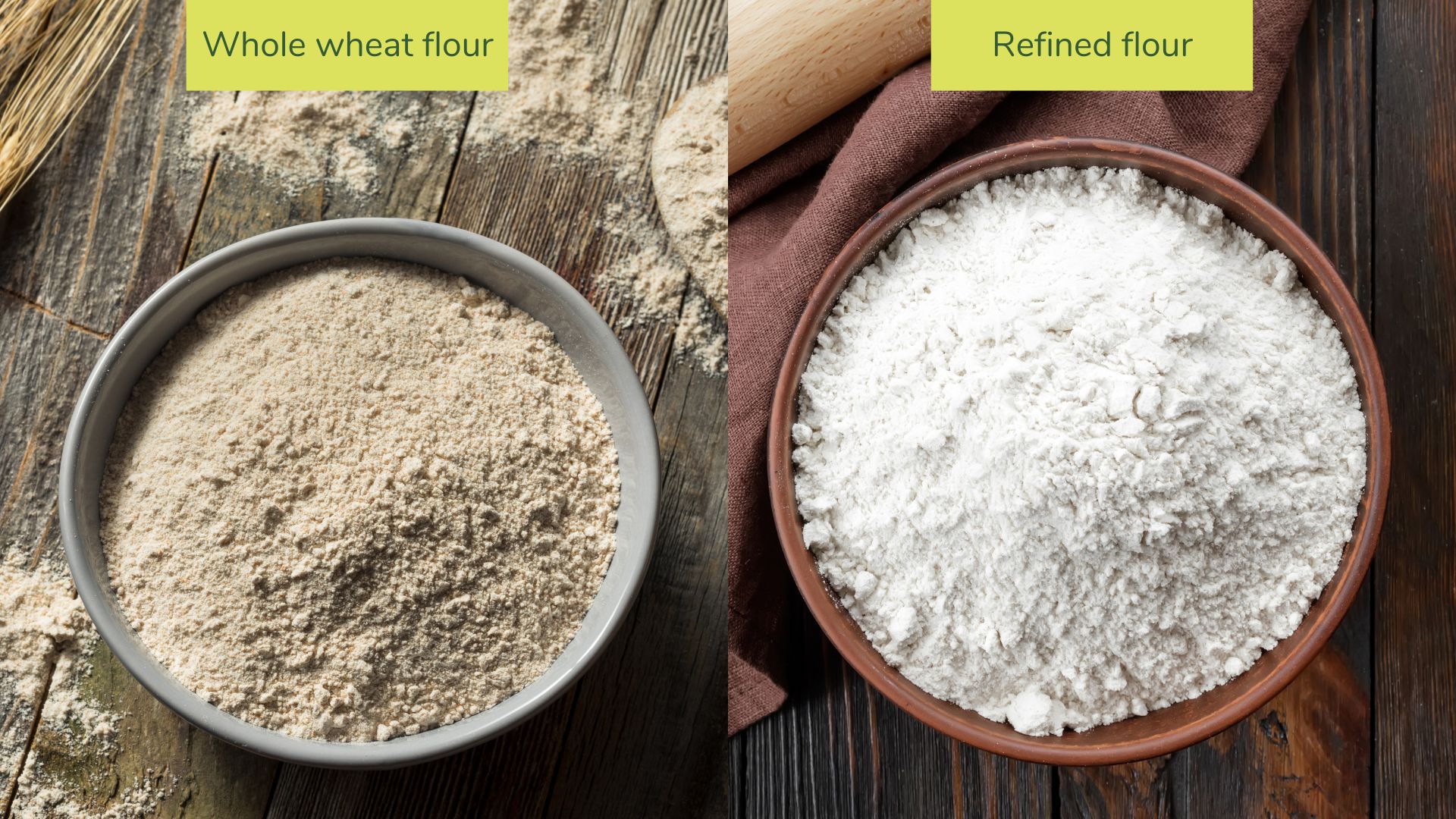
5. **Refined Grains and Processed Carbs**When grains are stripped of their natural fiber, essential minerals, and vital nutrients through processing, the resulting product behaves almost identically to pure sugar in the body. This broad category includes ubiquitous items such as white bread, many types of crackers, instant rice, and a surprising number of “multi-grain” imposters. These refined carbohydrates break down rapidly, causing sharp spikes in blood glucose levels, which inevitably lead to energy crashes, increased fat storage, and the insidious development of insulin resistance.
Over time, this consistent assault on blood sugar regulation significantly elevates the risk of developing type 2 diabetes and, by extension, cardiovascular disease. The absence of fiber in these foods means they offer little satiety, often leading to overconsumption and weight gain, which are independent risk factors for heart conditions. Dr. Sharonne Hayes, a leading cardiologist, agrees with many nutritionists that simple carbs found in chips, breads, and crackers can be an even greater issue than fat for some individuals.
Even seemingly benign snacks like rice cakes fall into this category, characterized by Dr. Bhojraj as “high glycemic, low nutrient,” which contribute to a “blood sugar roller coaster.” Similarly, “whole wheat bread with additives” is often criticized because, as Dr. Bhojraj states, “most are just brown-colored white bread” that fail to deliver the true benefits of whole grains. Dr. Elizabeth Klodas clarifies that while true whole wheat bread is beneficial, many products are misleadingly labeled, with refined flours and additives diminishing their health value.
The deceptive marketing extends to “gluten-free processed snacks” which, according to Dr. Bhojraj, are “just as inflammatory, just with better branding” for individuals without a gluten intolerance. The core issue is the highly processed nature, not the presence or absence of gluten. These snacks often contain other refined carbohydrates and unhealthy fats, simply swapping one set of problems for another without genuinely improving nutritional density.
Cardiologists strongly recommend embracing 100% whole grain or sprouted grain bread and other complex carbohydrates. These options retain their natural fiber, which slows down glucose absorption, provides sustained energy, and promotes gut health. Incorporating whole grains like oats, quinoa, and brown rice, and choosing whole wheat pasta, are essential steps to increase the complexity and nutrient density of your diet, providing genuine, lasting benefits for your heart and overall metabolic health.
Read more about: Beyond the Buzzwords: Unmasking 14 ‘Healthy’ Foods Secretly Sabotaging Your Diet

6. **Margarine and Trans Fats**Margarine, once erroneously championed as a heart-healthy alternative to butter, has been exposed as one of the most significant nutrition myths of the last century by cardiologists. Many versions of margarine and other fake butter spreads still contain industrially produced trans fats, which are chemically engineered to extend shelf life but inflict severe damage upon the human body, particularly the cardiovascular system.
Trans fats are a formidable enemy of heart health, engaging in a two-pronged attack: they significantly raise levels of LDL (“bad”) cholesterol while simultaneously lowering levels of HDL (“good”) cholesterol. This unfavorable shift in cholesterol profiles dramatically increases the risk of heart attacks and strokes. Furthermore, these insidious fats contribute directly to arterial stiffness and harm the delicate endothelial lining of blood vessels, crucial for proper circulatory function.
Even in minute quantities, the impact of trans fats can be profoundly detrimental over time. Cardiologists emphasize the importance of scrutinizing food labels to identify and avoid any product listing “partially hydrogenated oils” in its ingredients, as this is a clear indicator of the presence of trans fats. This vigilant approach is vital, as these fats can lurk in a surprising array of packaged baked goods, cookies, pastries, doughnuts, and many fried fast-food items.
The manufacturing process that creates trans fats, known as hydrogenation, transforms liquid vegetable oils into a solid or semi-solid form, making products more stable and giving them a longer shelf life. However, this chemical alteration creates a substance that the human body struggles to process, leading to the accumulation of plaque in the arteries and promoting widespread inflammation, both precursors to serious heart disease.
To safeguard your heart from these damaging fats, cardiologists advise a conscious pivot towards healthier alternatives. Grass-fed butter, in moderation, is a superior choice to margarine, offering natural fats without the industrial processing. Even better, extra-virgin olive oil and avocado oil provide monounsaturated and polyunsaturated fats that are beneficial for heart health, making them excellent choices for cooking, salad dressings, and spreading on bread, ensuring you nourish your body with fats that support, rather than jeopardize, your cardiovascular well-being.
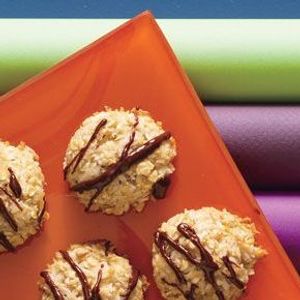
Coconut Macaroons
Ingredients
Equipment
Method
- Preheat your oven to 325°F (160°C). Line two large baking sheets with parchment paper and lightly spray with vegetable oil cooking spray.
- In a large, impeccably clean mixing bowl, whip the 10 egg whites with the 1/2 teaspoon salt using an electric mixer on medium-high speed until stiff, glossy peaks form.
- In a separate bowl, gently combine the 2 cups unsweetened dried shredded coconut, 2 cups plain quick-cooking oats, and 3/4 cup sugar.
- Carefully fold the whipped egg whites into the coconut-oat mixture until just combined, being careful not to deflate the whites too much.
- Using a 1-inch cookie scoop or two spoons, drop mounds of the macaroon mixture onto the prepared baking sheets, spacing them about 1 inch apart.
- Bake for 20-25 minutes, or until the macaroons are lightly golden brown around the edges and set on top.
- While the macaroons cool, melt the 2 tablespoons bittersweet chocolate morsels with the 1 teaspoon trans-fat-free soft-tub margarine in a small bowl over a double boiler or in the microwave in 15-second intervals, stirring until smooth.
- Once the macaroons have cooled completely on a wire rack, artfully drizzle the melted chocolate mixture over each macaroon.
- Allow the chocolate to set completely before serving or storing them in an airtight container.
Notes
Read more about: The Truth About Cooking Oils: Which Ones Fuel Inflammation and How to Make Healthier Swaps
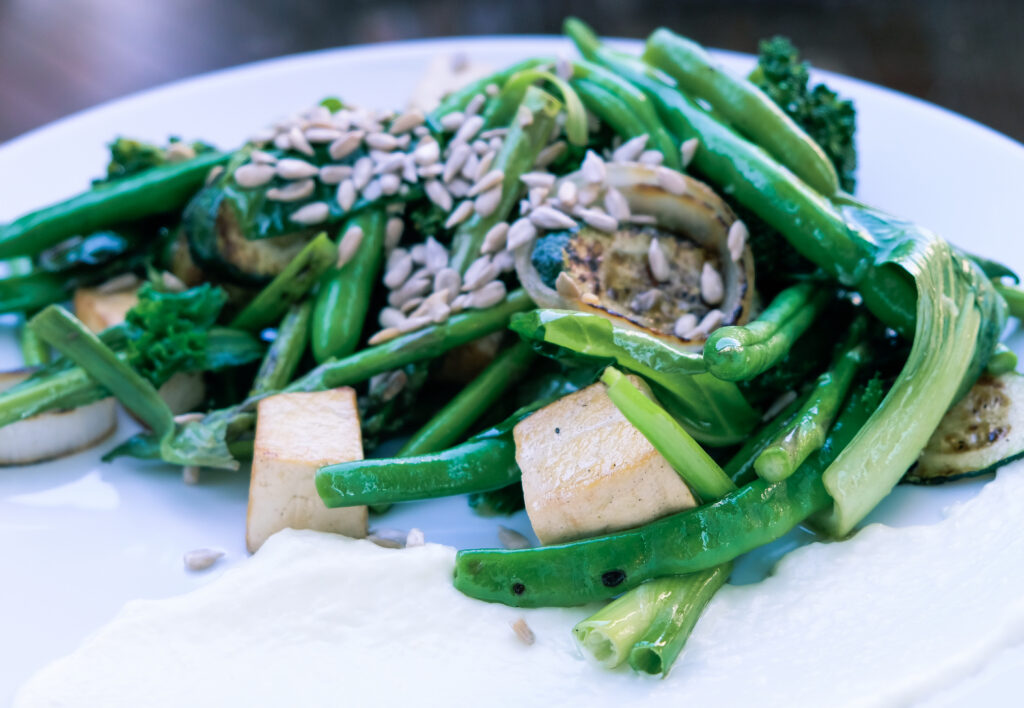
7. **Highly Processed Plant-Based Alternatives**The surging popularity of “plant-based” foods has unfortunately led to a misconception: that all items derived from plants are inherently heart-healthy. Cardiologists, however, issue a strong caveat regarding highly processed plant-based meat substitutes. While the intention to reduce animal product consumption can be commendable, many of these alternatives are, in fact, ultra-processed foods (UPFs), teeming with ingredients that can compromise cardiovascular health rather than enhance it.
These meat substitutes often feature a troubling concoction of sodium, inflammatory industrial oils (like canola, soybean, and corn oil), and synthetic additives such as methylcellulose and soy protein isolate. Dr. Bhojraj pointedly questions, “Just because something doesn’t contain meat doesn’t mean it’s good for you,” and advises that “If it takes a chemistry degree to decode the label, it probably doesn’t belong in your body.” This underscores the need to look beyond marketing claims and delve into the actual ingredient list.
The high sodium content in many of these products is a significant concern. While they may appeal to those seeking a meat-free option, the excessive sodium contributes to elevated blood pressure, mirroring the risks associated with traditional processed meats. The inflammatory oils used in their production, particularly when consumed regularly, can also promote chronic inflammation, a known precursor to arterial damage and heart disease.
Furthermore, the presence of synthetic additives and soy protein isolates, while not inherently harmful in small amounts, can contribute to a diet heavy in ultra-processed ingredients. Such a diet has been linked to disruptions in the gut microbiome and broader metabolic dysfunction. Cardiologists advocate for eating as close to nature as possible, and these highly engineered products often deviate significantly from that philosophy, representing a disconnect between biology and modern food science.
For those seeking plant-based protein, cardiologists strongly recommend whole, minimally processed sources that truly align with heart-healthy principles. Excellent alternatives include lentils, beans, and minimally processed tofu or tempeh. These foods provide abundant fiber, essential nutrients, and clean protein without the hidden sugars, excessive sodium, and inflammatory oils often found in their ultra-processed counterparts. Making this distinction is crucial for harnessing the true power of plant-based eating for a healthy heart.
The journey into cardiologists’ own dietary choices continues, revealing more surprising items that can silently undermine your heart’s vitality. Often perceived as innocuous or even healthy, these foods, under expert scrutiny, reveal hidden dangers. Understanding these subtle threats and making smarter swaps is crucial for truly safeguarding your cardiovascular health.
Read more about: Unlock Your Pantry’s Potential: 15 Simple Steps to Start Your Food Preservation Hobby
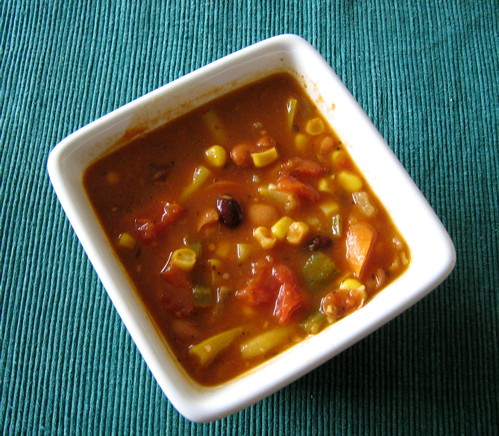
8. **High-Sodium Canned Soups**Canned soups offer convenience but often hide exceptionally high sodium content. A single cup can deliver 80% to 100% of your daily sodium limit, a fact few consumers realize. This excessive sodium elevates blood pressure, forcing your heart to work harder, straining kidneys, and dramatically increasing the risk of conditions like heart failure. Dr. Sanjay Bhojraj advises, “If you wouldn’t drink a glass of seawater, think twice before sipping that overly salty soup.”
The cumulative effect of a high-sodium diet promotes long-term arterial damage and widespread inflammation, subtly but consistently undermining optimal heart function. This chronic dietary stress stiffens blood vessels, making them more susceptible to plaque buildup and other cardiovascular complications over time. It’s a silent harm that accumulates daily.
For heart protection, cardiologists strongly recommend homemade soup. Preparing your own allows full control over ingredients, prioritizing fresh vegetables, savory herbs, and minimal sea salt. This simple shift transforms a potential heart hazard into a nourishing, heart-healthy meal, providing genuine cardiovascular benefits without the hidden sodium load.

10 minute Pumpkin Soup
Ingredients
Equipment
Method
- Finely mince the shallot and set aside.
- Heat olive oil in a medium saucepan over medium heat.
- Add minced shallot to the saucepan and sauté gently for 2-3 minutes until softened and translucent, being careful not to brown it.
- Stir in the ground thyme and sage, cooking for an additional 30 seconds until fragrant.
- Add the canned pumpkin and low-sodium chicken broth to the saucepan, stirring well to combine.
- Bring the soup to a gentle simmer, then reduce heat to low and cook for 5 minutes to allow flavors to meld.
- Season the soup with salt and ground black pepper to taste, adjusting as needed.
- Using an immersion blender, carefully blend the soup directly in the saucepan until completely smooth and creamy.
- While the soup is simmering, toast the pumpkin seeds in a dry small skillet over medium heat for 2-3 minutes until fragrant and lightly browned.
- Ladle the hot soup into bowls and garnish each serving with a sprinkle of toasted pumpkin seeds and thin slices or small dice of fresh Asian pear.
Notes
Read more about: Unlock Affordable Wellness: Your Comprehensive Guide to Healthy Home Cooking Without Draining Your Wallet

9. **Flavored Coffee Creamers**For many, flavored coffee creamers are an indispensable morning ritual, yet cardiologists view them as a “chemical cocktail” detrimental to heart health. These products are often packed with hydrogenated oils, artificial flavors, and significant added sugars, turning a healthful beverage into a vehicle for inflammatory ingredients and unhealthy fats.
The primary concern stems from hydrogenated oils, a leading source of industrially produced trans fats. Trans fats are notorious for raising “bad” LDL cholesterol while lowering “good” HDL cholesterol, a dual assault that significantly increases the risk of heart attacks and strokes. Even small daily doses contribute to arterial stiffness and plaque buildup before the day even truly begins.
Cardiologists advocate for healthier coffee alternatives. Unsweetened almond or oat milk offers creamy texture without damaging oils, sugars, or artificial additives. A sprinkle of cinnamon or vanilla extract provides natural flavor, allowing you to enjoy your coffee while actively supporting your heart health instead of inadvertently sabotaging it with hidden detrimental compounds.

Liquid Flavored Coffee Creamer
Ingredients
Equipment
Method
- Bring 2 cups of water to a rolling boil.
- In a large mixing bowl, combine the 2 cups of powdered coffee creamer and 1 cup of sugar.
- Carefully pour the boiling hot water over the powdered creamer and sugar mixture.
- Whisk the mixture vigorously until the powdered creamer and sugar are completely dissolved and the solution is smooth, ensuring no lumps remain.
- Stir in 1 tablespoon of vanilla extract or your chosen extract, mixing thoroughly to incorporate the flavor.
- Allow the homemade liquid creamer to cool completely to room temperature.
- Once cooled, transfer the creamer into a clean, airtight bottle or container for storage.
- Store the liquid creamer in the refrigerator. Shake well before each use to ensure even consistency and flavor.
Notes
Read more about: Chew Wiser, Feel Lighter: The 14 Worst Snacks for Your Liver According to Hepatology Consultants

10. **Agave Syrup**Despite marketing as a natural and healthy sugar substitute, agave syrup is on cardiologists’ “do not eat” lists due to its unique metabolic pitfalls. Many consumers choose agave believing it superior to table sugar, unaware of its exceptionally high fructose content. Dr. Sanjay Bhojraj states agave syrup “spikes triglycerides fast,” identifying this rapid elevation as a significant heart disease risk factor.
Dr. Elizabeth Klodas explains that excess fructose from agave is “rapidly metabolized into triglycerides by the liver,” leading to an unfavorable cholesterol profile. Unlike glucose, fructose is processed almost entirely by the liver, placing an additional metabolic burden when consumed in concentrated forms without beneficial fiber. This rapid conversion to triglycerides is a direct pathway to increased cardiovascular risk.
Cardiologists advise avoiding concentrated sweeteners like agave. Prioritize whole fruits, which provide fiber and nutrients, as the best source of sweetness. For occasional sweetening, natural alternatives such as dates or raw honey, used sparingly, offer a better metabolic profile, helping avoid detrimental triglyceride spikes associated with high-fructose syrups.

Grapefruit, agave & pistachio salad
Ingredients
Equipment
Method
- Using a sharp paring knife, carefully cut off the top and bottom ends of both grapefruits.
- Stand each grapefruit on a cutting board and slice downwards, following the curve of the fruit, to remove all the peel and white pith.
- Working over a small bowl to catch any juice, slice between the membranes of each grapefruit segment to release the pure fruit segments (supremes). Discard membranes.
- Gently transfer the grapefruit segments and any collected juice into a clean serving bowl.
- Drizzle the grapefruit segments evenly with 1 tablespoon of agave syrup.
- Gently toss the salad to ensure the agave syrup coats all the grapefruit segments.
- Sprinkle the 1 teaspoon of chopped pistachios over the top of the salad.
- Serve immediately or chill in the refrigerator for at least 15 minutes for enhanced flavor.
Notes
Read more about: Unmasking the Sugar Traps: 14 Unexpected Foods Secretly High in Sugar (and How to Avoid Them)

11. **Coconut Oil**Once a popular “superfood,” coconut oil is now viewed with caution by cardiologists, who advise against its liberal use, especially in large quantities. Despite its appealing aroma and perceived health benefits, its very high concentration of saturated fat raises significant concerns for cardiovascular health. Dr. Sanjay Bhojraj notes this “High in saturated fat is not great for already inflamed arteries,” indicating its potential to worsen existing vascular issues.
Coconut oil’s saturated fat content, exceeding even that of lard, is the core issue. Dr. Elizabeth Klodas recommends avoiding it, emphasizing that “saturated fats are pro-inflammatory and can raise low-density lipoprotein also known as the ‘bad’ cholesterol.” This elevation of “bad” cholesterol is a known factor in heart disease and plaque formation. Dr. Andrew Freeman mentions its use in studies “to induce atherosclerosis — sludge in the pipes, if you will, in rats and other animals,” vividly illustrating its clogging capacity.
The consensus among cardiologists is clear: while coconut oil has topical benefits, its dietary role should be minimal due to its pro-inflammatory potential and saturated fat content. For cooking and food preparation, prioritizing oils rich in monounsaturated and polyunsaturated fats, such as extra-virgin olive oil or avocado oil, is a far more heart-prudent strategy, actively supporting arterial health.

Seasoned Coconut-Oil Popcorn
Ingredients
Equipment
Method
- Heat the unrefined virgin coconut oil in a large, heavy-bottomed pot over medium-high heat.
- Add 2-3 popcorn kernels to the pot, cover, and wait for them to pop. This indicates the oil is at the correct temperature.
- Once the test kernels have popped, remove them from the pot. Add the remaining 3/4 cup of popping corn kernels and the 1/2 teaspoon of Adobo All-Purpose Seasoning to the hot oil.
- Stir quickly to ensure all kernels are evenly coated with oil and seasoning.
- Immediately cover the pot with the tight-fitting lid.
- Continue cooking over medium-high heat, gently shaking the pot back and forth every few seconds to prevent scorching and ensure even popping.
- Listen carefully. As the popping intensifies, continue shaking. Once the popping sounds slow significantly (to about 2-3 seconds between pops), immediately remove the pot from the heat.
- Let the pot sit, still covered, for about 30-60 seconds to allow any remaining kernels to pop and steam to dissipate.
- Uncover the pot and pour the freshly popped corn into a large serving bowl.
- Taste and adjust seasoning if desired, then serve immediately for the best texture and flavor.
Notes
Read more about: Seriously What Happened? 13 Once-Loved Childhood Candies Adults Just Don’t Crave Anymore.
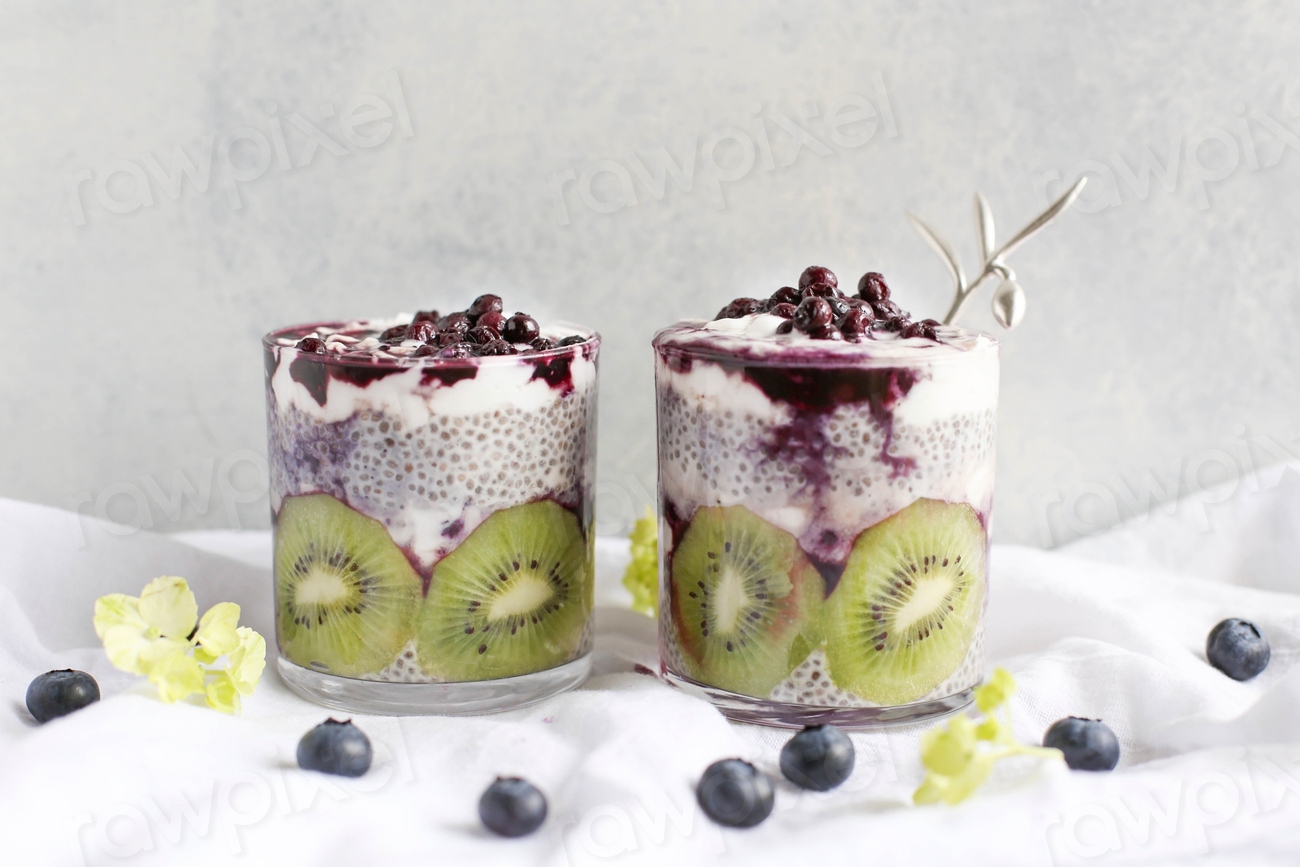
12. **Flavored Yogurts**While yogurt is celebrated for protein and probiotics, many flavored varieties are deceptively unhealthy. Cardiologists, including Dr. Sanjay Bhojraj, warn that these products often “hide tons of sugar behind the protein,” transforming a nutritious food into a sugar-laden dessert. A typical serving can contain 15 to 25 grams of sugar, comparable to or exceeding the sugar in a half-cup of vanilla ice cream, particularly in “low-fat” versions.
Beyond sugar, a significant concern is emulsifiers like xanthan gum and soy lecithin, used for texture and shelf life. Research suggests these additives can disrupt the gut microbiome, leading to inflammation. Dr. Maria Abreu links such chronic inflammation to a rise in colon cancer among young people, highlighting the profound impact of these hidden ingredients on long-term health.
To truly benefit from yogurt, cardiologists recommend plain Greek yogurt, typically free of emulsifiers and excessive added sugars. Customizing it with fresh berries and a sprinkle of cinnamon allows for controlled sweetness, valuable antioxidants, and fiber. This mindful choice ensures a genuinely heart-healthy and gut-friendly snack, avoiding the hidden pitfalls of many commercial flavored options.
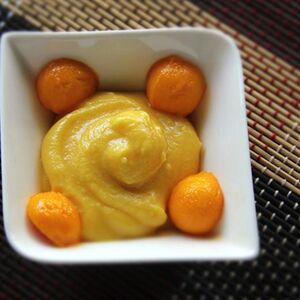
Aamrakhand (Mango-Flavored Yogurt) Recipe
Ingredients
Equipment
Method
- Line a fine-mesh sieve with cheesecloth and place it over a bowl. Add the unflavored yogurt, cover, and refrigerate for 4-6 hours or overnight to drain excess whey, creating hung curd.
- Meanwhile, gently warm 1-2 tablespoons of milk or water, then add the saffron strands to it and let them steep for at least 10 minutes to bloom.
- Peel the Alphonso mangoes, remove the pits, and dice the flesh into chunks.
- Transfer the mango chunks to a blender or food processor and blend until a smooth puree is formed.
- Once the yogurt is sufficiently drained, transfer the thick hung curd to a large mixing bowl.
- Add the prepared mango puree and the bloomed saffron mixture to the hung curd.
- Optionally, add 2-3 tablespoons of powdered sugar to the mixture, or adjust to taste based on the sweetness of your mangoes.
- Gently fold all ingredients together with a spatula or whisk until well combined and smooth.
- Cover the bowl and refrigerate the Aamrakhand for at least 1 hour, or until thoroughly chilled, allowing the flavors to meld.
- Serve chilled, optionally garnished with a sprig of mint or slivered nuts.
Notes
Read more about: Beyond the Buzzwords: Unmasking 14 ‘Healthy’ Foods Secretly Sabotaging Your Diet

13. **Protein Bars**Often perceived as ideal post-workout fuel or healthy on-the-go snacks, protein bars are frequently labeled by cardiologists like Dr. Sanjay Bhojraj as “candy bars in disguise.” Many popular brands are surprisingly high in added sugars, often contain inflammatory seed oils and various syrups, and include artificial ingredients. These components can negate perceived health benefits and contribute to digestive issues and metabolic stress.
Surveys consistently reveal the misleading nature; a 2019 report found nearly 40 percent listed chocolate as the main ingredient, with high levels of saturated fat, salt, or added sugar. A 2024 Environmental Working Group (EWG) report further warned that many are ultra-processed and contain alarming amounts of added sugars and artificial sweeteners, urging consumers to critically examine labels and question “health food” claims.
Cardiologists advise skepticism towards processed protein bars. Instead of engineered products, focus on naturally protein-rich whole foods for genuine nourishment. Wholesome options like nuts, seeds, or boiled eggs offer excellent protein and healthy fats without hidden sugars, questionable oils, and synthetic additives, truly supporting both fitness and heart health.
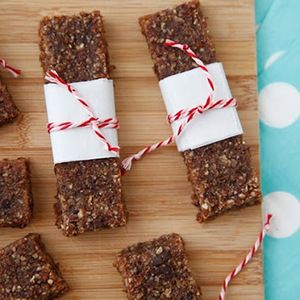
Protein Bars recipes
Ingredients
Equipment
Method
- Line an 8×8 inch baking pan with parchment paper, leaving an overhang on the sides for easy removal.
- In a food processor, combine raw cashews and almonds; pulse until finely chopped but not yet a paste.
- Add rolled oats, pitted dates, vanilla extract, and honey (or agave) to the food processor.
- Process the mixture until it comes together into a sticky, cohesive ball that holds its shape when pressed.
- Add dried cranberries or chocolate chips to the food processor and pulse briefly to incorporate them evenly.
- Transfer the mixture to the prepared baking pan.
- Press the mixture firmly and evenly into the pan using the back of a spatula or your hands, ensuring a compact layer.
- Refrigerate the pan for at least 30-60 minutes, or until the bars are firm.
- Using the parchment paper overhang, lift the chilled slab from the pan onto a cutting board.
- Cut the slab into 16 equal bars and store them in an airtight container in the refrigerator.
Notes
Read more about: 13 Simple Ways to Fuel Your Body: A Global Guide to Nutritious Snacking

14. **Potato Chips and Processed Snack Foods**Potato chips and similar processed snacks like nacho chips and cheese curls are universally identified by cardiologists as detrimental “junk food.” These highly processed items are typically fried, loaded with unhealthy additives, and contain excessive sodium, presenting a triple threat to cardiovascular health. Industrial seed oils used for frying often oxidize at high temperatures, forming inflammatory compounds that contribute to arterial plaque, hypertension, and increased risks of heart attacks and stroke.
The pervasive convenience of these snacks, as Dr. Andrew Freeman notes, should not outweigh the cost to our health. He advocates for the fiber-rich, nutrient-full foods provided by nature, like apples and carrots, over packaged options. Dr. Sharonne Hayes also emphasizes that simple carbohydrates in chips and crackers can be a greater issue than fat for many, stressing the need for more complex, nutrient-dense foods.
Even seemingly better choices like “vegetable chips” often fall short, being fried in the same problematic seed oils. To satisfy cravings for crunch without compromising heart health, cardiologists recommend wholesome alternatives. A handful of nuts or seeds provides healthy fats and fiber, while homemade baked sweet potato slices or roasted chickpeas offer a genuinely nutritious and satisfying crunch, effectively replacing processed dangers.
Read more about: 13 Simple Ways to Fuel Your Body: A Global Guide to Nutritious Snacking
15. **Red Meat (Including “The Other White Meat”)**Red meat, encompassing beef, veal, and lamb, poses significant challenges for heart health due to its high levels of cholesterol and saturated fat. While providing protein, cardiologists advise strict moderation, suggesting it form only a small fraction of your overall diet to mitigate cardiovascular risks. The animal fat found in red meat is particularly detrimental to arteries, contributing directly to plaque formation and elevated LDL cholesterol.
Pork, often marketed misleadingly as “the other white meat,” is also categorized as red meat and carries similar cardiovascular concerns. Its fat profile and common processing methods can contribute to arterial damage and elevated cholesterol levels akin to other red meats. This highlights the need to look beyond marketing and understand the actual nutritional impact rather than perceived differences.
Excessive saturated fat from red meat elevates “bad” LDL cholesterol, accelerating plaque buildup. Furthermore, reliance on red meat often displaces beneficial plant-based proteins, which offer protective fibers and essential micronutrients vital for heart health. To safeguard your heart, prioritize lean proteins like chicken, turkey, fish, and especially plant-based options such as tofu, lentils, or beans. If red meat is desired, consume small portions as a rare indulgence, making conscious choices that support long-term cardiovascular well-being.
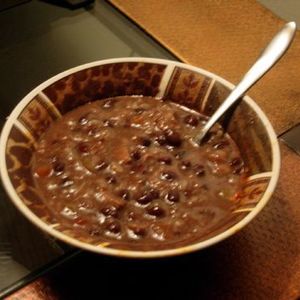
Karl’s Black Bean & Rice Soup
Ingredients
Equipment
Method
- Prepare ingredients: Finely chop the onion and the turkey breast meat.
- Rinse the black beans thoroughly under cold water.
- In a medium saucepan, cook the white rice according to package directions. Set aside.
- In a large pot or Dutch oven, sauté the chopped onions over medium heat until softened and translucent, about 5-7 minutes.
- Add the rinsed black beans, chopped turkey, and salsa to the pot with the onions. Stir to combine.
- Add enough water (or chicken/vegetable broth for more flavor) to the pot to achieve your desired soup consistency.
- Bring the mixture to a gentle simmer, then reduce heat to low, cover, and let it cook for 10-15 minutes to allow the flavors to meld.
- Stir in the previously cooked white rice into the soup.
- Taste the soup and adjust seasonings as needed, adding salt, pepper, or additional spices if desired.
- Ladle the hot soup into bowls and serve immediately.
Notes
The insights from Dr. Sanjay Bhojraj and his esteemed colleagues consistently highlight a powerful truth: your food choices are profoundly impactful, shaping the health of your heart and your overall vitality. While convenience or misleading marketing can steer us toward less-than-optimal options, these cardiologists provide a clear roadmap. Embracing whole, unprocessed foods and making small, consistent swaps away from inflammatory and artery-damaging ingredients can lead to remarkable and lasting benefits. It’s about actively choosing nourishment that allows your heart to thrive, ensuring a healthier, more vibrant life for years to come. Remember, your bloodwork will prove it – these mindful decisions are an investment in your most vital organ.






